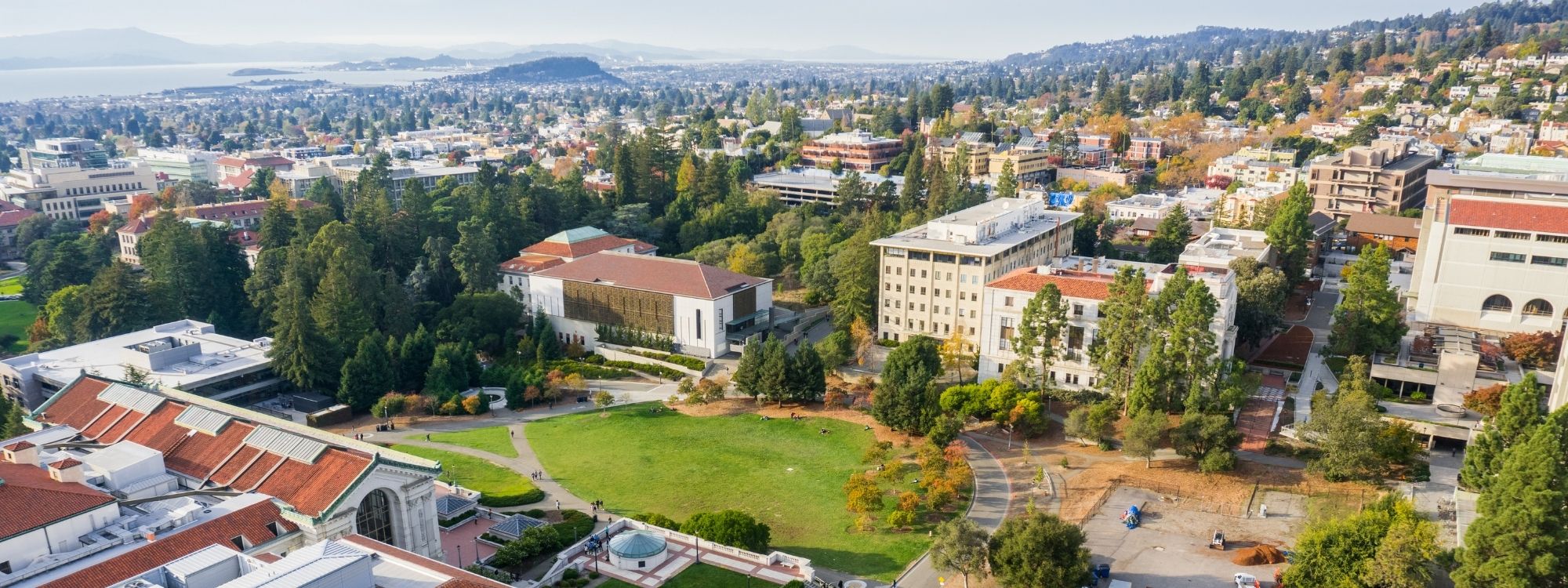Update: After weeks of panic around a court-mandated enrollment freeze that would require UC Berkeley to significantly reduce admissions, California lawmakers unanimously passed SB-118, legislation that will give public colleges and universities 18 months to comply with a court-ordered environmental review before any mandatory enrollment restrictions (LA Times). This legislation, introduced to the Senate and passed into law in just 3 days, was a last resort effort after the early-March decision by the California Supreme Court to not review UC Berkeley’s appeal, effectively requiring UC Berkeley to withhold over 5,000 acceptance letters to qualified students for Fall 2022.
While we celebrate this win—avoiding an alarming precedent of categorizing students as pollutants—SB-118 is far from a solution. As a state, we have largely agreed on the need for infill housing as a solution to our dual climate and housing crises, yet CEQA still operates under the false assumption that if “people weren’t living in Berkeley, they wouldn’t be living on planet Earth” (NY Times).
One study found that roughly 80% of the state’s CEQA lawsuits target infill projects in existing communities, and 100% of CEQA housing lawsuits in the Bay Area were in infill locations (Hastings Environmental Law Journal, 2018). Moreover, CEQA is most heavily used to prevent development in whiter, wealthier, higher-resourced locations – suggesting that CEQA is effectively being used to uphold our history of redlining and discriminatory housing practices. With many Bay Area cities updating their Housing Elements, and the State showing unprecedented support for climate-smart growth, now is the time to open Pandora’s box and rethink how CEQA applies to infill development. Keep reading for more information on the UC Berkeley lawsuit and how CEQA has been used to thwart environmental goals.
It’s been hard to miss the recent news of a court decision that limits admissions to UC Berkeley—the State’s flagship public university—due to a lawsuit claiming violation of the California Environmental Quality Act (CEQA). On February 10th, the California First Court of Appeal upheld the decision made by the Alameda County Superior Court to limit UC Berkeley’s enrollment to 2020-21 levels and stop the development of a faculty housing project as a response to a suit brought forth by Save Berkeley’s Neighborhoods, a local NIMBY (Not In My Backyard) group of Berkeley homeowners. This decision may restrict the admission of more than 3,000 hopeful high schoolers from receiving acceptance letters for Fall 2022.
The lawsuit claims that the Environmental Impact Report (EIR) prepared for a new faculty housing project violated CEQA when it failed to address the impacts of the University’s expansion plan (SF Chronicle). Essentially, the court ruled with the Save Berkeley Neighborhood Group that the EIR had to be redone to address the impacts to traffic, noise, housing, and the effect on the environment that new students would cause.
This case highlights a major issue with state law that is preventing housing from being built in well-resourced, transit-oriented, climate-safe, infill locations. If we cannot accommodate growth within our existing cities, the only alternative will be to push people to live farther away from jobs in places that threaten our natural and working lands and contribute to sprawl. Let’s dive deeper into the background of this legislation and what it means for climate-smart development.
What is CEQA?
CEQA (California Environmental Quality Act) was passed in 1970 in an effort to mandate information sharing and public processes for projects that could have impacts on the environment. Contrary to popular belief, CEQA has two main functions:
- To provide decision-makers with information about the environmental impacts of projects prior to granting approval, and
- To allow the public to comment on the impacts of projects in their community (State of CA)
So, the goal of CEQA is not to outright prevent projects that will negatively impact the environment, but instead, to provide information on project impacts and mitigation measures, and set up processes for public comment. CEQA has been instrumental in fighting environmental injustices and protecting our natural assets but given our dual housing and climate crises it may be time to consider how CEQA can better align with California’s changing priorities.
What happens when CEQA is misused?
Since CEQA’s enactment, lawsuits brought against agencies tasked with complying with CEQA have significantly changed the way the landmark California law is used, especially for new housing developments. Groups and individuals looking to “protect unique neighborhood character” and “maintain quality of life” have successfully killed or significantly delayed new development by filing CEQA lawsuits, typically claiming that the EIR did not properly account for traffic or noise. The lawsuit against UC Berkeley goes even further. It is the first time the court ruled that admissions numbers are covered by CEQA (LA Times), which is a concerning precedent in and of itself.
Unfortunately, this instance of misusing CEQA to deny infill housing is not an outlier. Since the public enforces CEQA, any individual can file a lawsuit claiming there is an issue with CEQA compliance, typically requiring additional studies that can be prohibitively costly and add years to a project. On the surface, this sounds harmless—if the EIR is missing something it should be redone, right? In most cases, yes, CEQA has been very effective in making sure that environmental information is disclosed, especially when it comes to polluting industries. However, should an infill housing development be held to the same standard as a new powerplant or a greenfield subdivision?
What is Greenbelt Alliance’s take on this?
Here at Greenbelt Alliance, we are ardent supporters of CEQA and what it stands for but we also think it is time to consider how we can strengthen the legislation to align with climate goals—and that means changing how CEQA treats infill housing.
Rather than limit growth, we must accommodate it through infill housing—development within areas that are already largely developed— and streamlined policies to support development in climate-smart locations. If we don’t find a way to accommodate more people in our existing cities, the only alternative will be sprawling development into our Wildland Urban Interfaces and natural and working lands. As Anita Chabria put it, “we are a growing state, with growing needs. That means dormitories will need to be built in neighborhoods near the stately old homes” (LA Times).
Berkeley’s Mayor Jesse Arreguin and Vice Mayor Lori Droste shared their alarm and disagreement with the decision in an op-ed, asking for the immediate revision of the decision. “The University of California’s flagship campus and one of the nation’s premier public universities, UC Berkeley has a duty to grow to meet the needs of each new generation,” they wrote.
It is time to take the next step in tearing down the anti-growth legacy of our cities by making sure that our state’s best-known environmental legislation isn’t standing in the way of achieving a climate-safe future.





